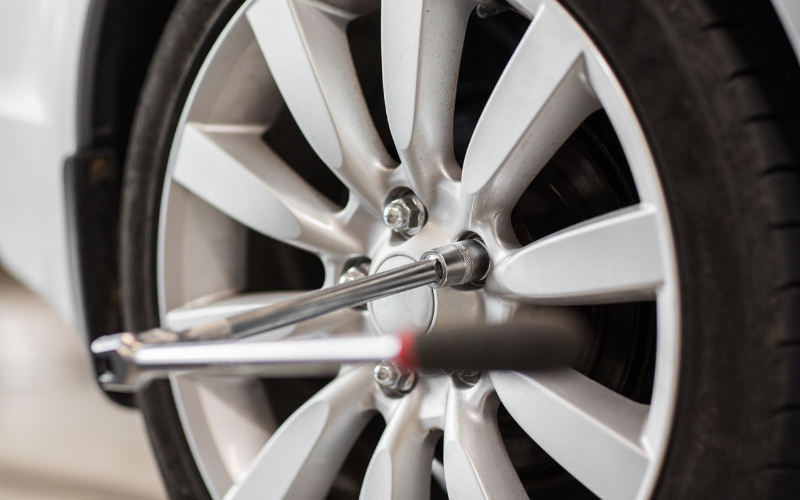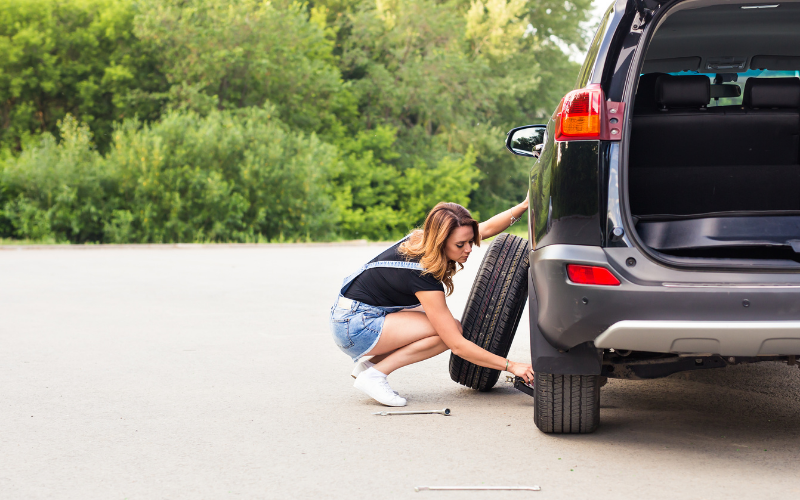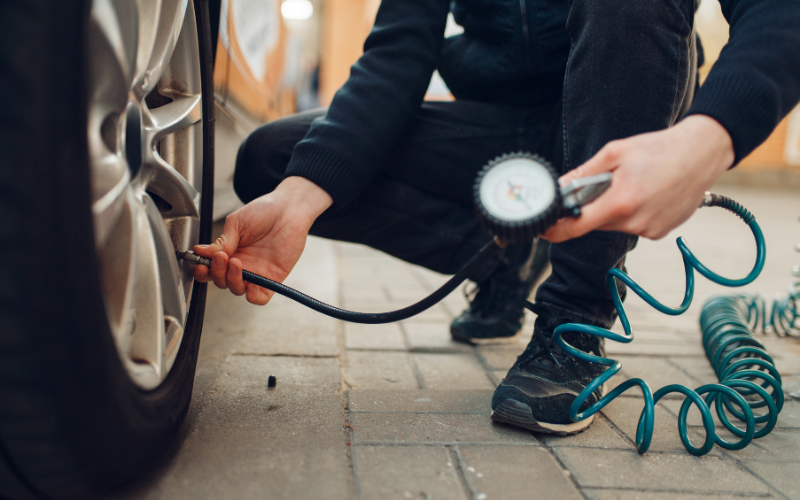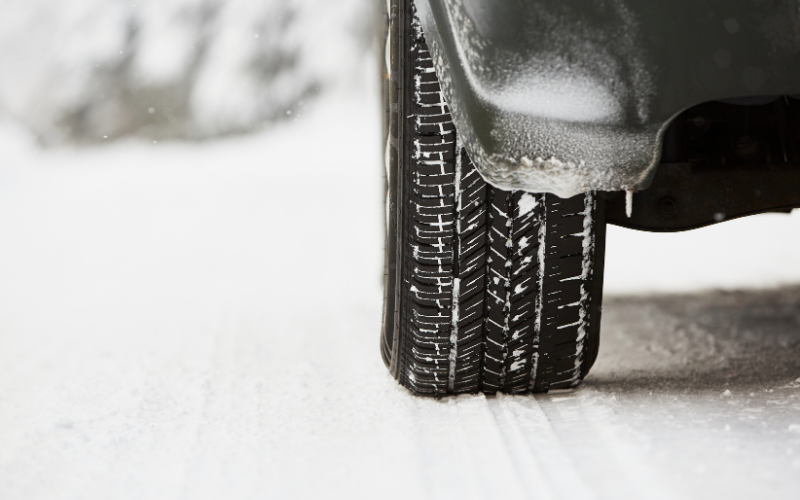The Bristol Street Motors Guide to Tyres

Tyres are not usually the first thing that springs to mind when it comes to the well-being of our vehicle. However, tyres are arguably one of the most important components of a car, seeing as though they are the only point of contact between your car and the road.
Here is a helpful little guide to tyres and why it is important for them to be kept in good condition.
Why are they so important?
As mentioned above, tyres directly put a car’s power onto the road and therefore they need to be kept in good condition. If anything were to happen to one of your tyres, the whole journey could come to a halt and in extreme conditions, this could even cause harm to you and other road users if you are in a situation where you are unable to pullover and get off the road.
Different types of tyres
Winter, Summer, whatever the season, there are tyres for all weather conditions and situations:
- Winter Tyres – Winter tyres are designed with different treads and grooves to offer greater traction on different road surfaces, such as snowy, icy and wet surfaces. They are also made to remain flexible when temperatures drop to ensure road safety at all times.
- Summer Tyres – Summer tyres are also known as standard tyres and are designed to offer high levels of performance and to be able to withstand higher temperature levels.
- Eco Tyres - Eco tyres are designed to be more environmentally friendly, without decreasing levels of performance and safety
What should my tyre pressure be?
If your tyres don’t have enough air in them, many issues can arise from this as they are more likely to pop mid-journey which could result in a major accident due to losing control. It can also cause your wheel rim and tyre to become more susceptible to impact damage and reduce the grip your car will have on the road. However, it is also important to make sure you don’t over-inflate your tyres as this can lead to an uncomfortable journey, reduced grip on the road and excessive wear to the tread centre.
The ‘correct’ tyre pressure is different for every car, however, there are many online tyre pressure calculators that allow you to enter the registration of your car and it will provide you with the perfect tyre pressure for your vehicle. There is also the option of an analogue tyre pressure gauge, which can be very useful and are cheap to buy.
How to check tyre treads?
Tyre tread is important as it keeps you and your passengers safe!
The purpose of the tread is to remove water from between the tyre and the road surface when travelling on wet roads.
If your tread depth is not up to scratch, you are increasing the risk of longer stopping distances, which can be extremely dangerous and could even result in a collision.
So, after discussing the importance of checking your tyre treads, you may be wondering how you can do this – well, believe it or not, there’s a simple trick using a 20p coin that can assist you with this.
Using a 20p coin to check your tyre treads
Place a 20p coin into the main tread grooves of your tyre. If the outer border is hidden, then you know that your tread is above the legal limit.
Punctures
Punctures can usually be repaired quickly and cheaply (by professionals of course), however, it’s worth bearing in mind that only three puncture repairs per tyre are recommended. If this is exceeded, it is advised that the tyre is replaced.

How to change a tyre
Changing a tyre can be done by yourself, however, this must be carried out safely and if there is any doubt in your mind that you are unsure what to do or don’t feel confident enough, it is always best for it to be done by a professional.
Before getting into changing the tyre, it is important to make sure you have stopped in a safe place to be able to do this. Make sure to leave your hazard lights on when you park so it is clear to other drivers that you have stopped because of a problem.
Equipment needed:
- Wrench – to remove the wheel nuts
- Jack – to lift the car off the ground
- Wheel chock – this will stop the car from rolling
- Wheel nut key – this is needed if locking nuts are fitted
- Car handbook – for reference
It is advisable to always carry this equipment in the boot of your car along with a spare tyre so you are always prepared if the situation arises where you may need to change a tyre.
10 simple steps to changing a tyre
- Prepare the car – Make sure to apply the handbrake, remove all passengers from the vehicle and take the spare wheels and necessary tools out of the boot.
- Position the wheel chocks – Position the chock on the opposite wheel to the one with the puncture (bricks or large rocks can be used as an alternative to chocks).
- Loosen the wheel nuts – Turn the wheel wrench anti-clockwise and loosen the nuts to a point where they can be turned by hand (this is easier and safer to do whilst the car is on the ground).
- Jack the car up – All cars have dedicated jacking points in which these can be found in your car handbook. Try to position the jack at the side of the car, close to the punctured wheel and place a small plank of wood under the jack in order to keep it stable. Next, slowly begin to raise the car until the flat tyre is 10-15cm off the ground.
- Remove the flat tyre – Completely loosen and remove the wheel nuts, then gently pull he tyre towards you until it comes free from the car and place it flat on the ground.
- Mount the spare wheel – Slide the spare wheel in line with the wheel nut slots and replace the wheel nuts, tightening them by hand.
- Lower the car and tighten the bolts – Use the jack to lower the car slightly, so that the spare tyre is in contact with the ground and use the wrench to fully tighten the wheel nuts.
- Fully lower the car – Bring the car fully down and remove the jack.
- Check the spare tyre pressure – If you have a tyre pressure gauge, use it to make sure the tyre is fully inflated or alternatively, drive to a petrol station and use the gauge there.
- Take your punctured tyre for repair – Visit a garage or tyre fitter at the first opportunity and give them your punctured wheel so that they can advise you on whether to repair or replace it.
Are winter tyres worth it?
The answer to this question is dependent upon the type of vehicle as perhaps these are more suitable for high-performance vehicles.
Advantages of winter tyres:
- They are designed with different treads and grooves to offer greater traction on different road surfaces, such as snowy, icy and wet surfaces.
- They are made to remain flexible when temperatures drop to ensure road safety at all times.
- Winter tyres can reduce braking distance by up to 11 metres in icy conditions.
Disadvantages of winter tyres:
- Extreme cold conditions do not last for long periods so winter tyres will need to change back to standard tyres after winter.
- Changing tyres back and forth can be costly.
- The removal of Winter tyres can cause a storage problem.
Tyres from Bristol Street Motors
For more information on Tyres at Bristol Street Motors, click below:

